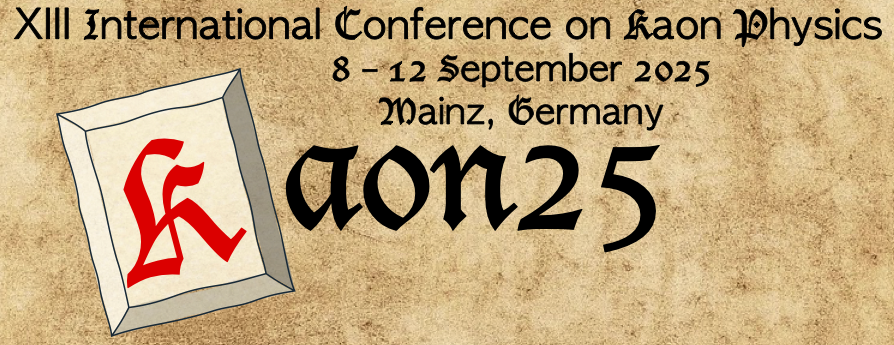Searches for the decays $K^{+}\rightarrow\pi^{+}X$ and $\pi^{+}\rightarrow e^{+}N$ are presented using data collected in 2016-2022 and 2017-2024, respectively. Results are interpreted to constrain a range of new physics scenarios covering all four portal model scenarios. Upper limits on the $K^{+}\rightarrow\pi^{+}X$ branching ratio are established at the $10^{-11}$ level, providing...
Due to the high sensitivity required to study the $K_L\rightarrow \pi^0\nu\overline{\nu}$ decay, KOTO is in a unique position to study rare $K_L$ interactions, such as sub-GeV quark coupling to dark matter. One avenue to study this is the mode $K_L \rightarrow \pi^0\pi^0X$, where $X\rightarrow\gamma\gamma$, and another is the ``dark pair'' $K_L\rightarrow XX$ where $X \rightarrow...
The NA62 experiment at CERN, designed to measure the highly-suppressed decay $K^{+} \to \pi^{+}\nu\bar{\nu}$, has the capability to collect data in a beam-dump mode, by removing the kaon production target and moving the upstream collimators into a "closed'' position. In this configuration 400 GeV protons are dumped on an absorber and New Physics (NP) particles, including dark photons, dark...
The PIENU experiment at TRIUMF has provided, to date, the most precise experimental determination of R$^{\pi}_{e/\mu}$ , the ratio of pions decaying to positrons relative to muons. While more than an order of magnitude less precise that the Standard Model (SM) calculation, the PIENU result is a precise test of the universality of charged
leptons interaction, a key principle of the Standard...
We investigate kaon three-body decays to ππa and μμa, where a is a new low-mass pseudoscalar. The ππa channel occurs at tree level, while μμa is loop-suppressed but turns out to be finite. These modes take advantage of the excellent tracking performance at LHCb. We outline an estimation strategy for the sensitivity that future searches could achieve, based on the present uncertainties in the...
A search for the massless dark photon in the decay $K^{+} \to \pi^{+} \pi^{0} \overline{\gamma}$ is performed with the OKA detector exposed to 17.7 GeV/c RF separated secondary beam of the U70 Proton Synchrotron.
The missing mass analysis is performed to search for the stable invisible dark photon in the final state.
No signal is observed, and a preliminary result for the 90% C.L. upper...
